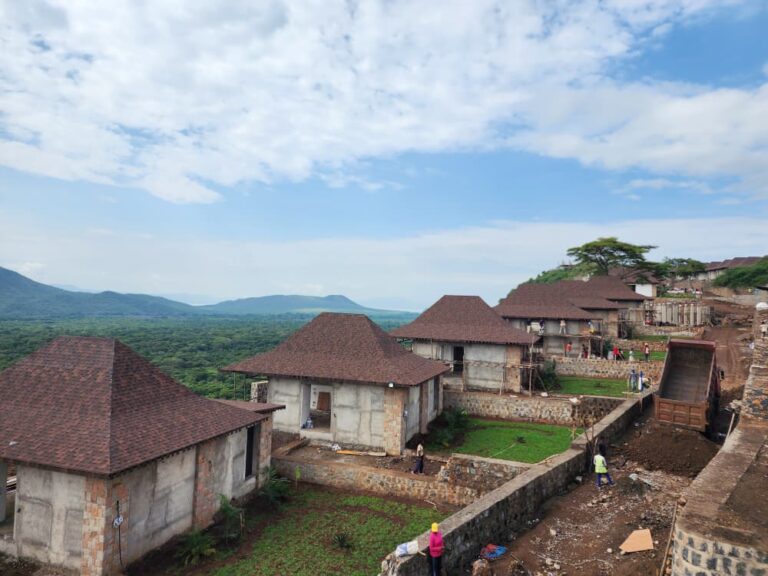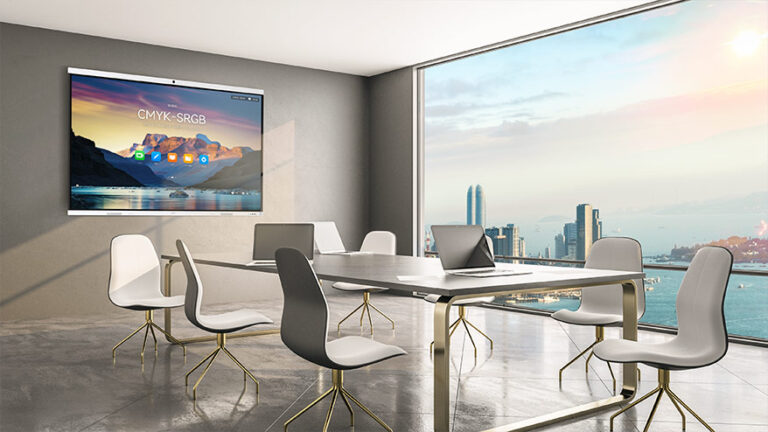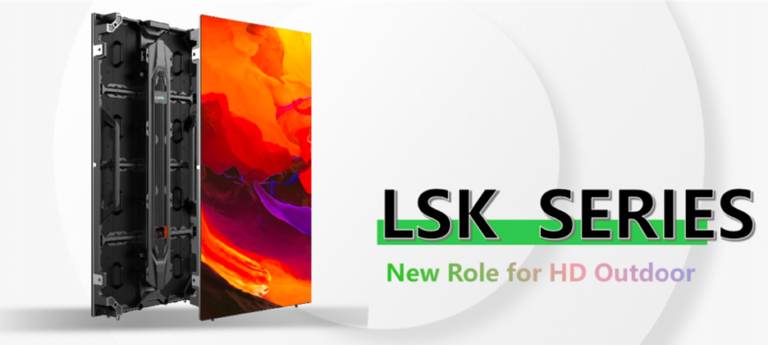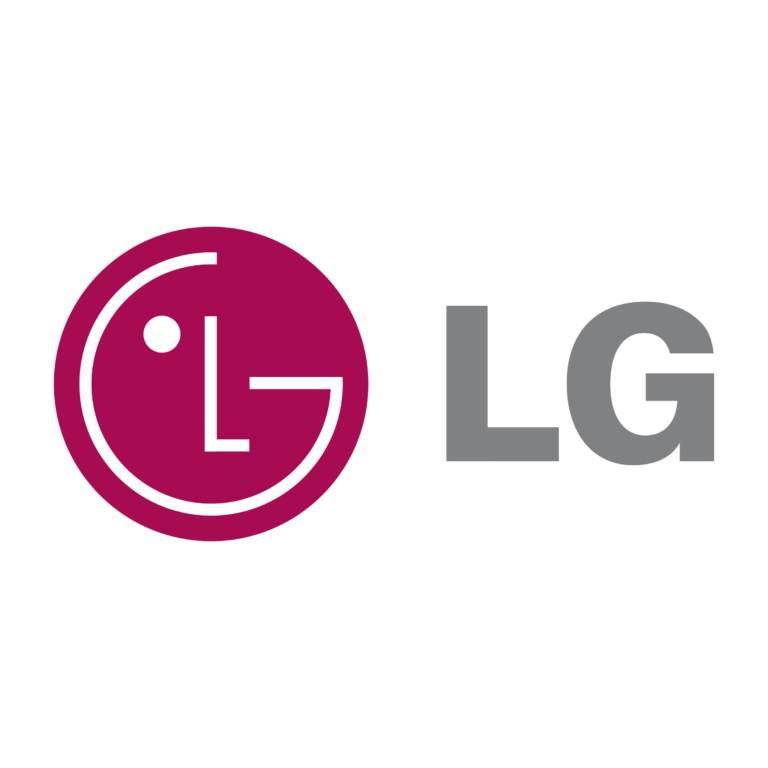Key Factors to Consider When Mounting a TV Display in a Meeting Room
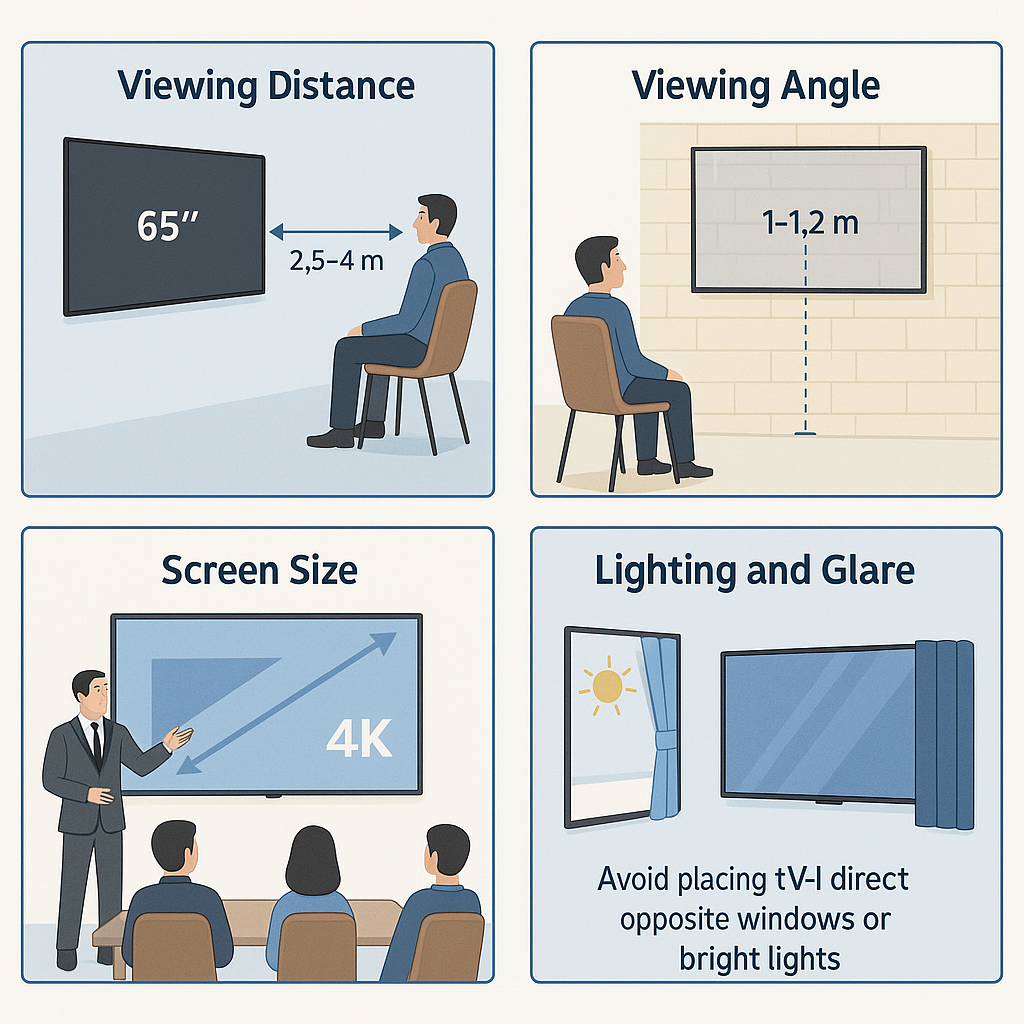
When mounting a TV display in a meeting room, you should consider several technical, ergonomic, and aesthetic factors to ensure visibility, comfort, and effectiveness. Here are the most important ones:
🔧 1. Viewing Distance
- Ideal viewing distance = 1.5 to 2.5 times the screen’s diagonal size.
- Example: For a 65” screen, sit about 2.5–4 meters away.
- Here is the exact math behind the numbers; 65” x 1.5 =97.5 inches & 65” x 2.5 = 162.5 inches. Inches to meters we get the recommended length in meters. You can adapt this and make it simple during site visits and make sure you recommend the right screen size for the room. If given the room, take the measurements and reverse the above method.
👁️ 2. Viewing Angle
- Mount at eye level for seated viewers — typically, 1m to 1.2m from floor to screen center. Which legth you decide, make it uniform across the building or campus. It will help with easethetics of the whole building or campus and makes future planning or adjustments across the building easier to determine and implement. Uniformity is the word in engineering.
- Tilt mounts can help with angle adjustment if the TV is higher.
📏 3. Screen Size
- Depends on room size and number of viewers.
- General rule: Larger rooms need bigger screens (usually 55”–85”).
- Use 4K resolution for sharpness, especially in bigger rooms.
- Use the method of viewing distance to determine the screen size. It will eventually come naturally when you enter the room.
🌞 4. Lighting and Glare
- Avoid placing the screen directly opposite windows or bright lights.
- Use anti-glare coatings, blinds, or reposition lighting if needed. All major manufacturers including those represented by Perlogy Technologies have an anti-glare coating. In spaces where you cant get a suitable space the the display is facing a high ambient situation, propose a brighter one. Brightness is measured in nits and always available on the specification sheet. They start from 250nits to several thousands.
🔌 5. Power and Connectivity
- Ensure access to:
- Power outlets
- HDMI, USB-C, Ethernet, etc.
- Wireless presentation systems (e.g., AirPlay, Miracast, Zoom Rooms)
- Consider running cables through the wall or table for a clean look.
🛠️ 6. Mount Type
- Fixed mount: Slim profile, but no adjustments.
- Tilt mount: Allows screen angle adjustments.
- Swivel/Articulating arm: Useful for flexible viewing positions.
📱 7. Integration with AV System
- Should connect seamlessly with:
- Conference phones
- Cameras (for video calls)
- Soundbars or room speakers
- Control systems (touch panels, remotes)
📐 8. Wall Strength and Safety
- Use wall studs or a secure mounting system for weight support.
- Check screen weight vs. mount rating.
- In some sites you may want to submit your screens to the mechnical engineer on site to approve.
🎯 9. Purpose and Content
- Will it be used for:
- Detailed text and charts? (requires sharper resolution)
- Video calls? (camera placement matters)
- Casual presentations? (less demanding)

Available Now for Africa. Collaborate in style!
![]() Let’s talk: info@perlogy.co.ke
Let’s talk: info@perlogy.co.ke
![]() Call/WhatsApp: +254 792 651 241
Call/WhatsApp: +254 792 651 241
We’re stocking all kind of screens units in Dubai for immediate shipping across:
![]() Kenya |
Kenya | ![]() Uganda |
Uganda | ![]() Tanzania |
Tanzania | ![]() Rwanda |
Rwanda | ![]() Burundi |
Burundi | ![]() DRC |
DRC | ![]() South Sudan |
South Sudan | ![]() Ethiopia |
Ethiopia | ![]() Nigeria
Nigeria



